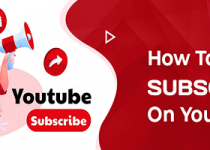12Jan 24 Open Graph Meta Tags: Best Social Media Engagement Tips

Every content creator knows that “content is King,” but well-written content means nothing if you lack readers and followers. Open Graph Meta Tags are essential elements of social media platforms to ensure that your content is presentable and viewable to a broader audience spectrum in the age of dominant social media presence.
It is no surprise that you paused scrolling and indulged in an interesting post, whether on Instagram or Facebook. The headline is unique, the description is fascinating, and the image is the cherry on top.
We click on the share option to ensure that this unique piece of content reaches millions of viewers. This is where the Open Graph comes into action.
Let us find out what an Open Graph is. How do we understand its functions and benefits to ensure that the corresponding web pages are popularly accepted on the social graph?
In today’s blog, we are going to discuss Open Graph Tags in detail and how they can benefit your web page in the long run.
Open Graph Meta Tags: Why Was It Launched?
Open Graph Tags was launched by Facebook to ensure that a particular webpage becomes extensively popular in terms of social media dynamics. To say in simpler terms, open graph tags help to control the appearance of your website when it is shared on social media.
The open graph meta tags were first launched by Facebook back in 2010 in the hope of optimizing every Facebook post. These tags allow the post to better control when it comes to sharing information from a third-party website to a Facebook page.
Let me tell you that Twitter and LinkedIn also recognize open graph tags apart from Facebook if you think otherwise or have any doubts. Since the robots of X were unable to figure out their own tags, X had its own X cards. Moreover, X uses OGP tags to make the process simpler for its robots.
OGP tags are an important aspect of marketing, as they make sure that only proper and authentic information is shared on social media. When a particular user shares a link to your website on various media platforms, OGP tags help to validate the correct information, and the symptom boosts user engagement, and customers learn more about your product and your brand.
Your web page contains secrets and codes that are not usually visible to the naked eye. Now, these tags help dictate the correct title description and image a particular social media platform must use when sharing your content. Of course, there are multiple implementations of them, so before we dive deep into the subject, let us first understand why open graph tags matter.
Open Graph Data: Social Media Engagement
If you are wondering how the Open Graph tags help to boost your social media marketing strategy, there are a few important reasons that are discussed below:
1. A Complete Look
Have you ever wondered what the elements that make a particular post on social media like Facebook, X, and LinkedIn look interesting and unique and not monotonous and boring when you share it? The answer is an Open graph. These visuals include a well-crafted title, a description, and a unique image, which are far more attractive and engaging than the links. This is more like buying a new LED screen TV and replacing it with a black and white one.
2. Control The Content You Share
With Open Graph, you are the Sailor of your own ship. Here, you get to present the content that you share in your way instead of giving social media full control. That is, you can redefine the title and description, choose a separate image, and even choose the content category you are willing to share. The world of online marketing may sound enticing but is not completely devoid of risks; hence having control over what you share is important, and Open Graph leverages that.
When the previews are rich, it automatically increases the CTRs or the click-through rates. Images play an important role in increasing user engagement. A survey found that Facebook posts that contain images have more user engagement compared to those posts that lack a proper image or do not have an image at all. Thus, the audience who can view your content will click on the entire post to learn more.
3. Brand Name And Maintaining Consistency
Brand reputation and consistency are extremely important in the world of content marketing, and Open Graph Tags elevate the brand’s name. It boosts user engagement and maintains consistency by giving it a unique look and appeal on all the social media platforms where you are posting your content.
Moreover, the open graph tags make sure that the same title description and images are displayed every time the website link is shared. Maintaining consistency is extremely important for your brand image as it helps the users to identify your website easily.
Open Graph Tags Every Marketer Should Know
As we have explained previously, OGP tags are extremely important as they help you to have control over your content when it is posted on social media platforms, especially Facebook. As open graph tags help you control the title, the description, and the image, this helps you make your content look stunning when you finally share it.
Additionally, there are a few other points that every marketer should be aware of:
- When you add an OGP tag, you make sure that you incorporate the proper image along with a proper description, which finally improves the click-through rate. Along with that, you can add simple details, like the name of a movie or a book, to make the post more relatable.
- When you add OGP tags, you can track the progress of your content; that is how it is performing once posted on Facebook. Now, when someone is sharing your content on Facebook, the open graph tags direct traffic data directly to Facebook, where you can finally see the content that is getting maximum engagements and the ones that need improvement.
If you are wondering how to add an OGP tag, then let me tell you that adding OGP tags is simple and easy, and the majority of content management systems come with a plugin or an extension that simplifies the entire procedure.
1. Og: Title
This parameter helps to define the title of your content. In other words, this is more like a meta title tag. It is worth noting that if Facebook fails to identify the og:title incorporated on your webpage, it starts using the title that is mentioned in the open graph.
2. Og: URL
Have you noticed that every time you share a particular link on Facebook, those tags display vibrant pieces of information about the link, like the image, the description, and the title?
This is another great way to add a “canonical” URL for the page that you are sharing on social media platforms or wish to share. Canonical URLs notify the social media platforms where to find the actual content.
That being said, you can define one particular page where all the things you have shared get accumulated. However, it is always suggested to have more than just one particular URL for the same post.
3. Og: Type
This open graph tag lets you describe the type of content you are sharing, that is, if it is a blog, a video, a picture, or anything else. Here’s a list:
- Blogs/Article
- Movie/Games/Book
- Place/City/Country
- Celebrities/Authors/Actors
- Hotels/Food Joints/Restaurants
This is an important aspect of your page and helps to denote a real-life object, provided your page has a “like” button. Now, the same will appear on a particular user’s profile, with the expectation that they will “like” it too.
4. Og: Image
What helps content to stand out from the rest and makes it unique?
Images.
This OGP tag is the most interesting and has been used by marketers for maximum conversion rates. Once you choose the og:image choose the image of your choice, or else Facebook will just come up with an irrelevant image that might not hold value to your content.
5. Og: Description
Og: The description is quite similar to the meta description tags. This is the point where you usually give the readers a sneak peek at your content. Now, in the case of of: description, the excerpt is shown on the Facebook tile link instead of the search engine results page.
It is worth noting that og: descriptions won’t have a direct impact on the overall SEO score. However, you can make it compelling to attract the general public.
Advanced Open Graph Meta Tags
Advanced Open Graph Meta Tags
- Og:site_name: You can use this tag if you are planning to share content that is part of a substantial network.
- Og: audio/og:video: Add this tag when you wish to add a particular audio or video to your post.
- Og:locale: Use this tag when you want to define a particular language.
- FB:app_id: This tag helps in linking different Facebook applications.
Take One Step Towards Social Media Success With Open Graph Meta Tags
When it comes to social media success, Open Graph Meta Tags are crucial. With this, you can control how your content is being represented on the social media platforms. When implemented properly, using the right tags, these OGP tags can help you get better user engagement along with driving more traffic.
Despite having so many advantages, these tags are hardly used by marketers. There is only one reason for this – Not everyone knows how to use OGP tags
So, next time you decide to share something important, do not forget to use proper OGP tags.
However, if you are overburdened with work and failing to maintain the work-life balance, taking the help of a few extra pairs of hands seems like a good decision.
The experts at UsePerWish understand and value your business and also know the best possible ways to implement open graph meta tags that generate a positive impact on your side.


